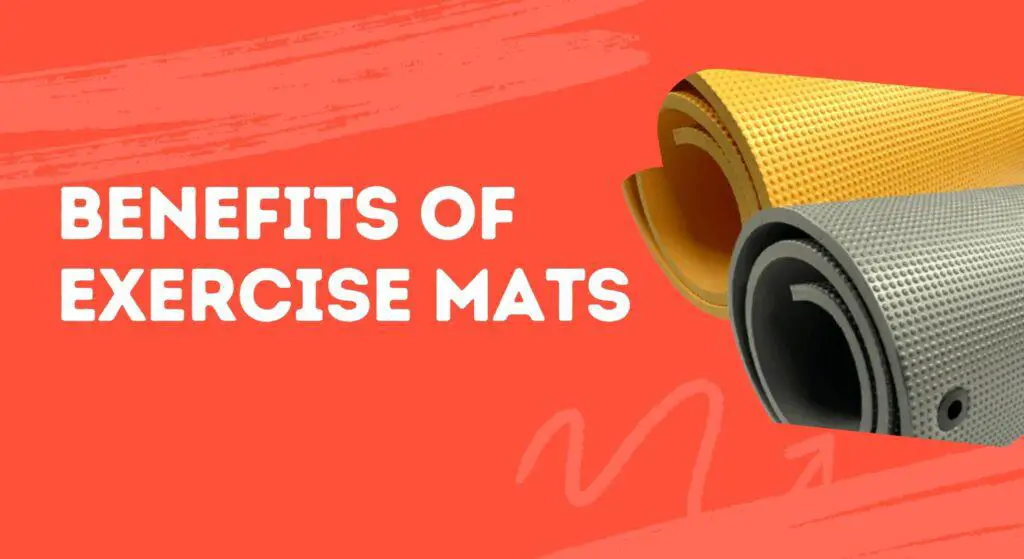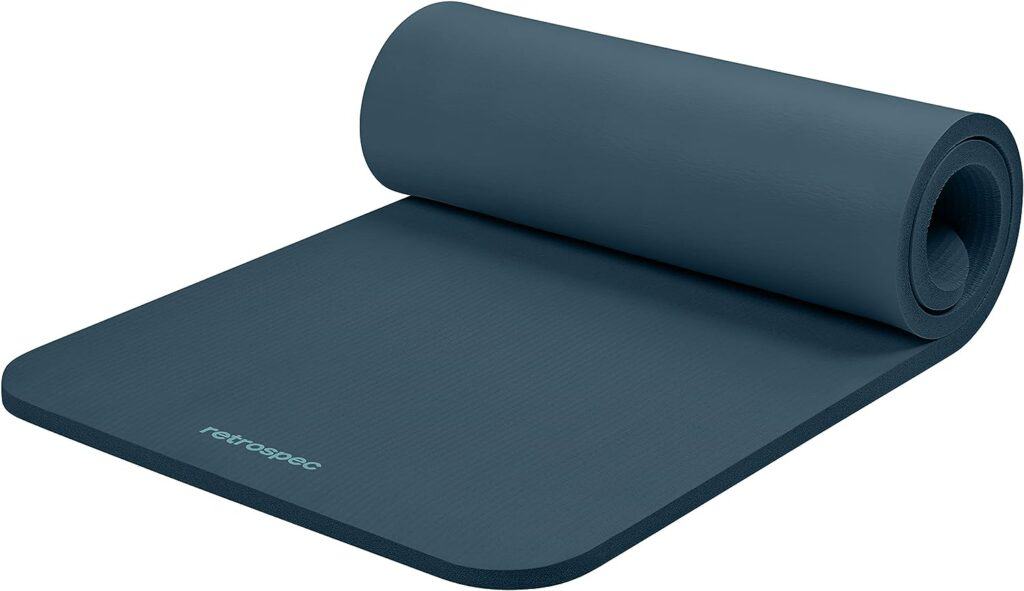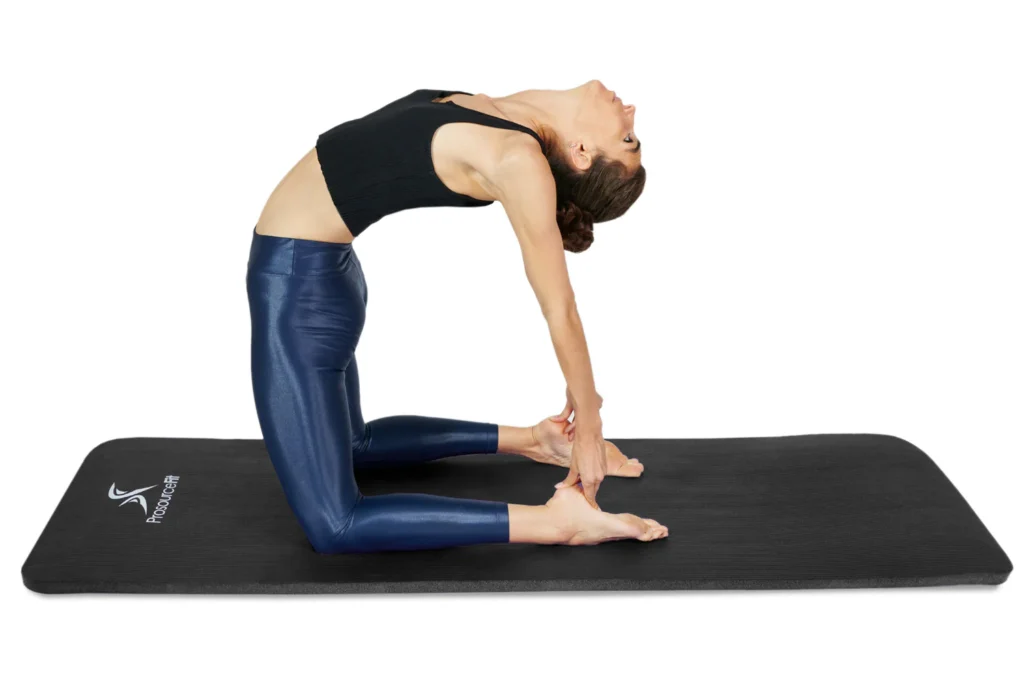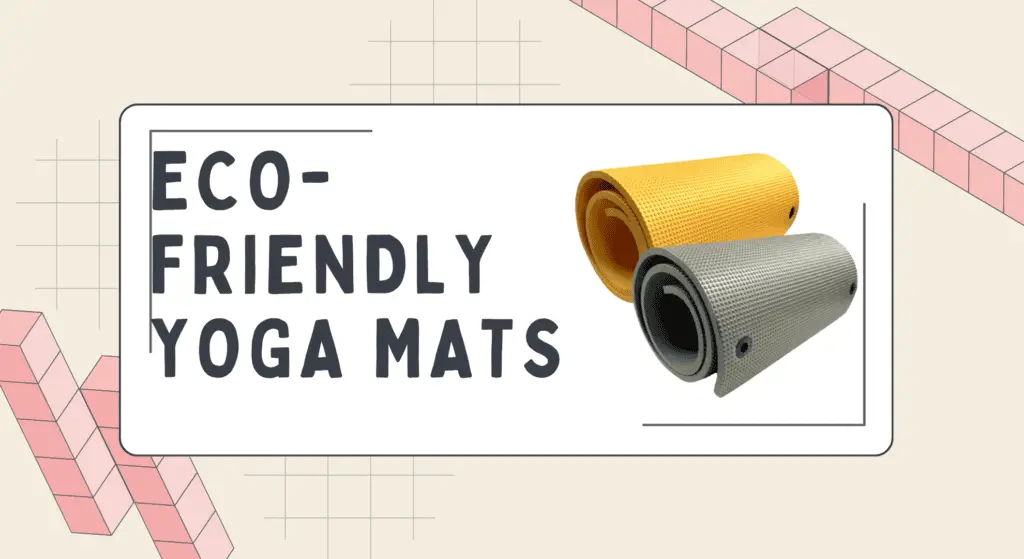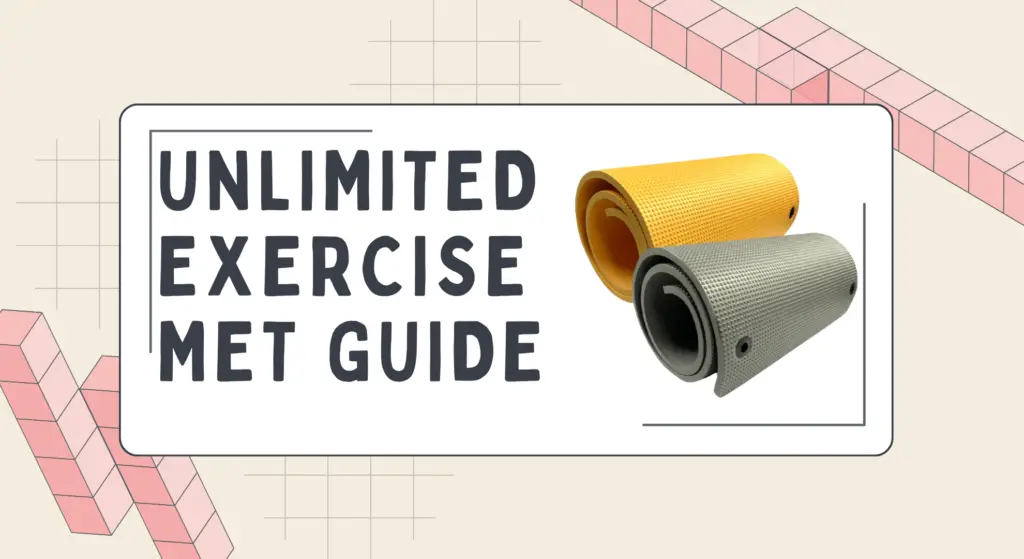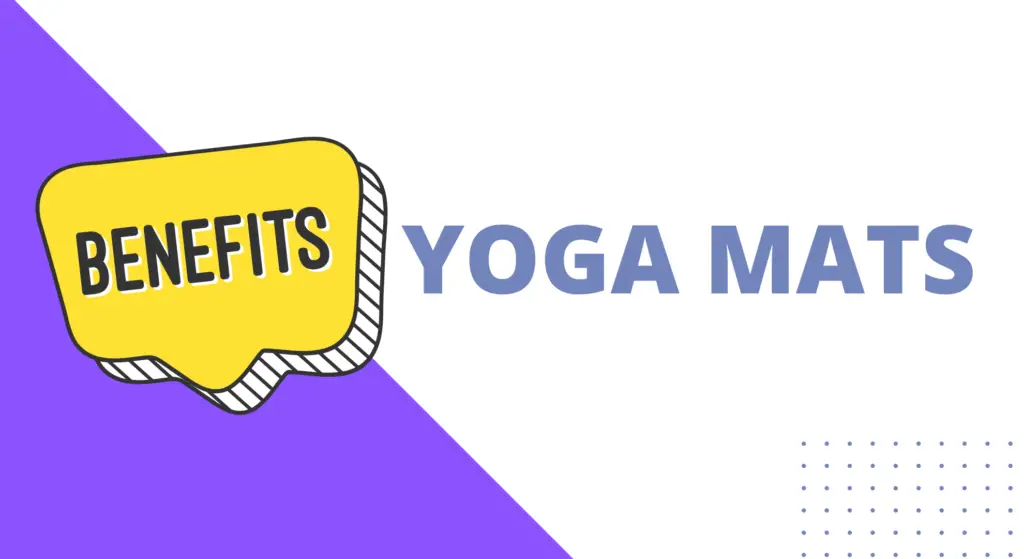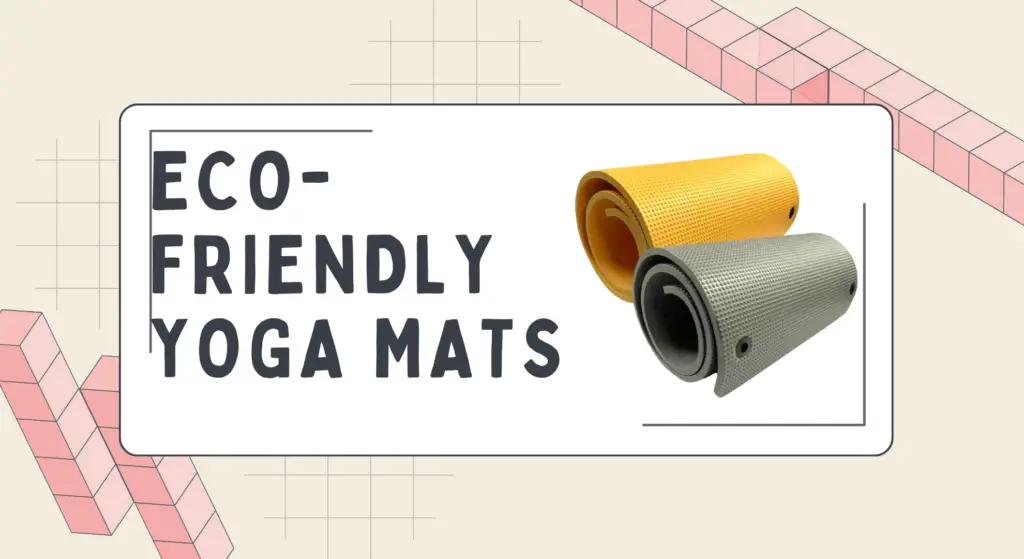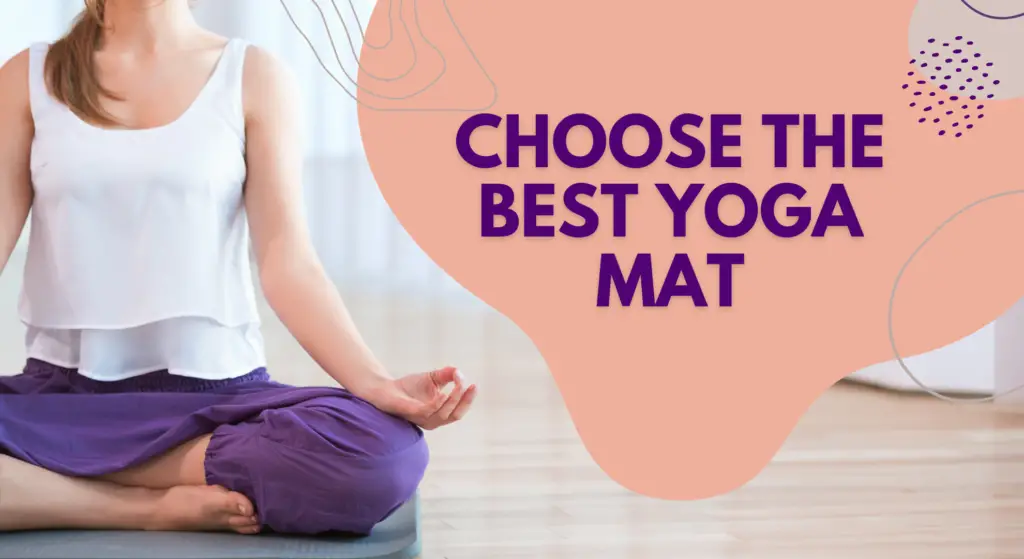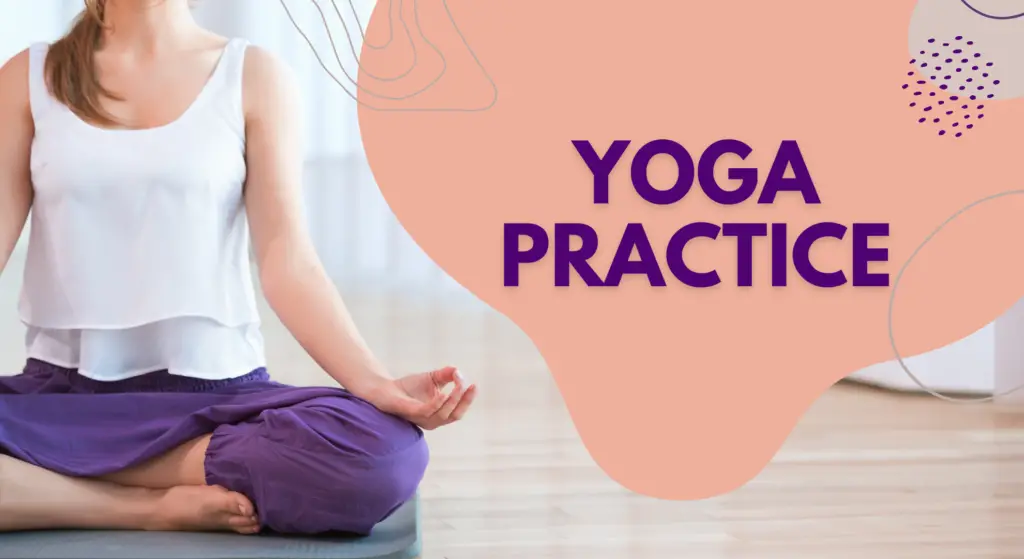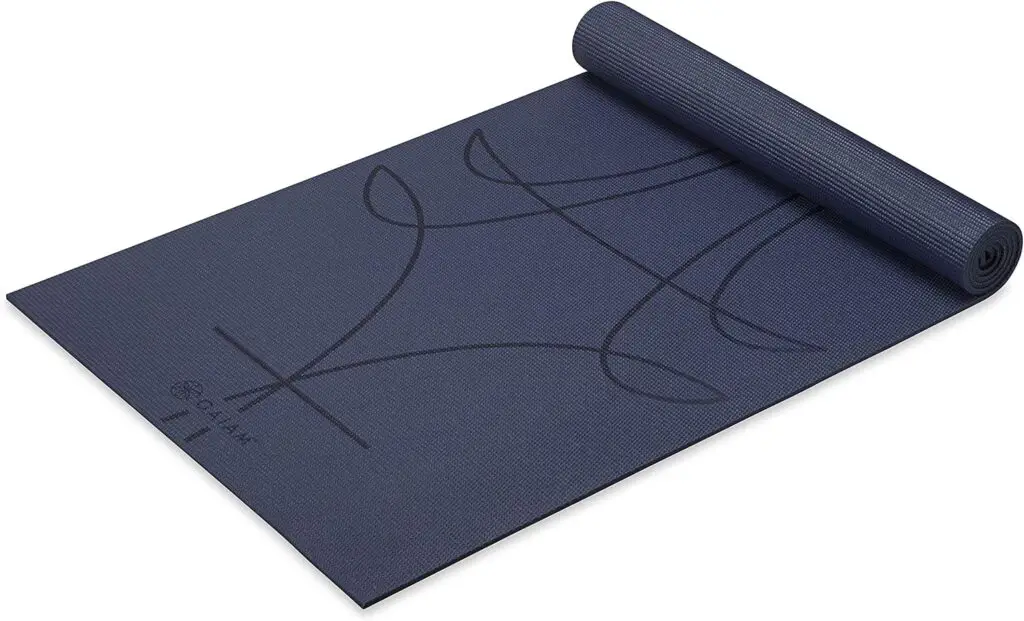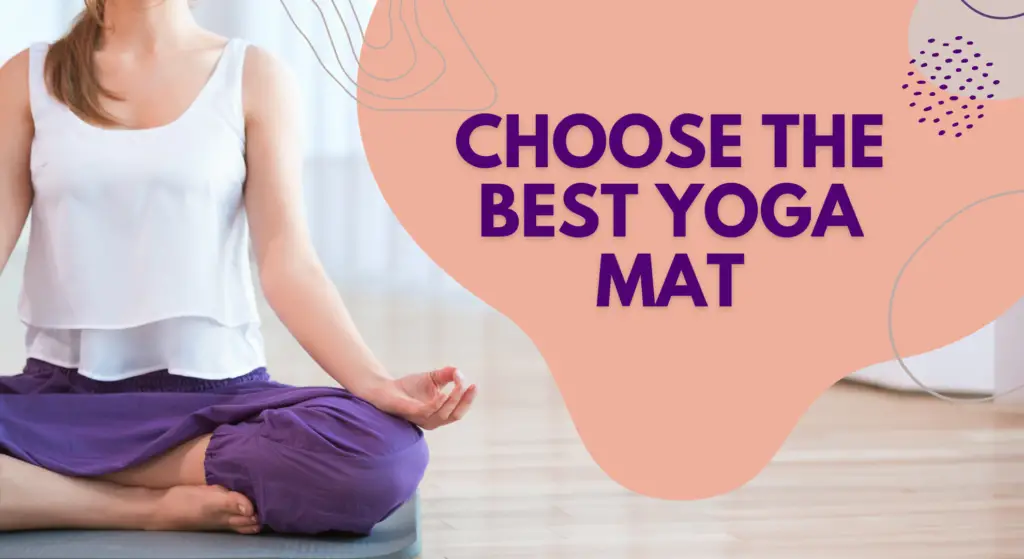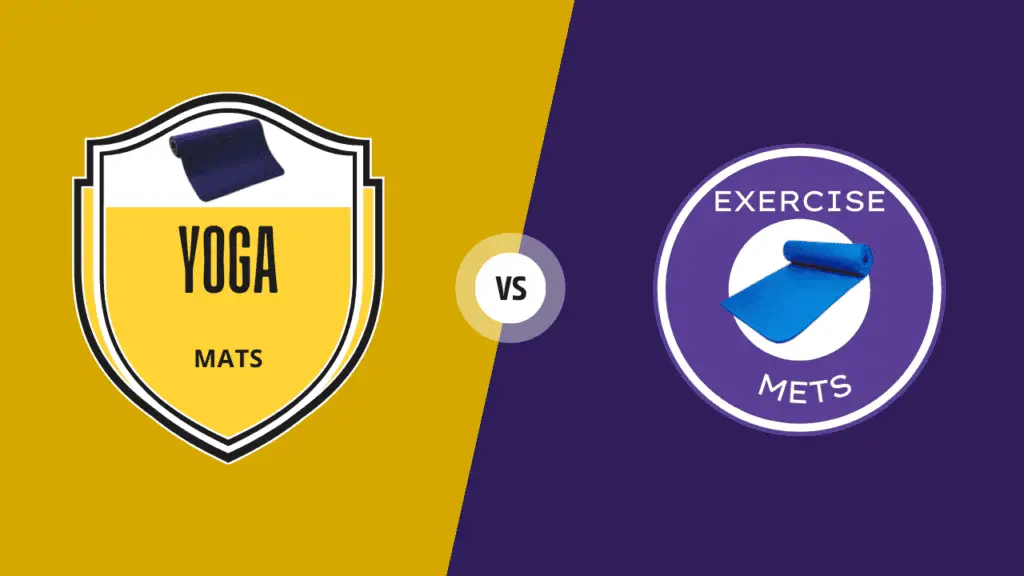
Yoga and exercise seem similar on the surface – they both involve physical movement and activity. However, there are distinct differences between yoga mats and exercise mats in terms of their structure, purpose, and composition. Understanding these differences is key to determining the appropriate type of mat for your fitness needs.
The Intended Use and Purpose: Yoga mats
Yoga mats are specially designed for the practice of yoga to provide cushioning and grip during poses. The materials and thickness give just enough support without being overly soft.
- Yoga mats comfortably cushion knees, hips, and elbows on hard floors. This prevents pain and injury during yoga flows and holding poses.
- The grippy texture creates traction to stay balanced during one-legged postures or transitional vinyasa movements between poses.
- Yoga mats evenly distribute weight and stabilize hands and feet in standing postures like Warrior and Tree Pose.
- They provide a smooth rolling surface for executing yoga sequences fluidly while getting into proper alignment.
Table of Contents:
In addition to yoga, these mats accommodate stretching, Pilates, barre workouts, and other low-impact floor-based movement. The gentle cushion and traction suit slower-paced exercises that involve deep stretching and holding postures over time.
In contrast, exercise mats optimize intense cardio routines, weight training, HIIT sessions, and other strenuous workouts. They remain firm and steady against jumping, kicking, and other high-impact movements.
- Thinner exercise mats maintain balance by doing plyometric moves like burpees, high knees, and skaters.
- The dense cushion beneath distributes impact for Plyo workouts with various jumping jacks, hops, and box jumps.
- Durability withstands slamming medicine balls, free weights, or stepping on and off the mat frequently.
- Easy to wipe sweat during short breaks in circuit training or CrossFit-style motion exercises.
While exercise mats support heavy activity, they may feel uncomfortably hard and slippery for slow mind-body movement. The thinner padding fails to protect joints during long holds on the mat.
Key Differences in Purpose:
| Yoga Mats | Cushioning for yoga flows and poses |
| Exercise Mats | Stability for HIIT, weights, and cardio |
Density and Thickness for Support
Cushioning needs vary based on low or high-impact activity. Thickness and density provide necessary support without instability.
Yoga Mat Thickness
- Yoga mats range from 1/8 inch to 1/4 inch thick on average.
- Plush 1/4 inch mats ensure sensitive hips and bony joints don’t dig into hard surfaces during seated postures or long holds.
- For standing balances, 1/8 inch gives just enough cushion without wobbling on a soft unstable surface.
- Extra thick yoga mats over 1/4 inch compromise stability during already challenging strength moves.
Exercise Mats Thickness:
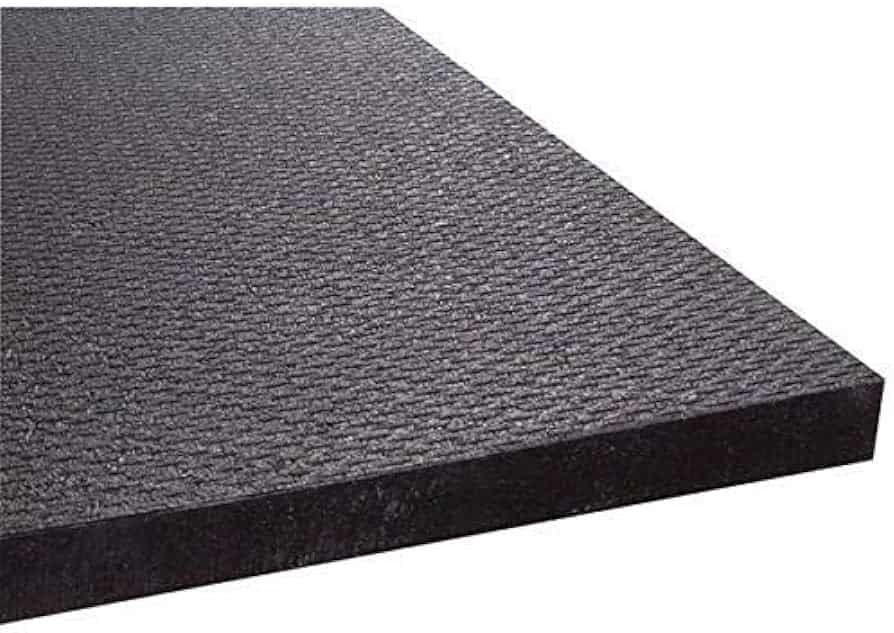
- Exercise mats are thinner, usually between 1/16 inch to 1/8 inch.
- The denser surface stabilizes plyometric moves and strength training without sagging under slammed weights or constant impact.
- Adequately protects against pain and bruising if falling, but aren’t meant for long-term floor exercises requiring thick cushion.
Thickness Comparison:
| Surface | Yoga Mat Thickness | Exercise Mat Thickness | |
| Plush Cushioning | 1/4″ | – | |
| Gentle Cushioning | 1/8″ | – | |
| Thin Dense Support | – | 1/8″ | |
| Maximum Stability | – | 1/16″ |
Grip and Traction from Textured Surfaces Yoga mats and Exercise Mats
Yoga involves lots of transitional movements and balancing. Mats require a grippy texture to facilitate proper alignments and prevent sliding into poses.
Yoga Mat Surface Materials:
- Rubber, PVC, or jute create friction keeping hands and feet from slipping out in poses.
- Sure-grip and tacky textures suitable for bare feet and socks.
- Microfiber upper layers absorb sweat while keeping the mat gunk-free between washes.
- Some natural jute or cotton surfaces allow for light steaming to refresh grip.
Exercise mats undergo intense activity and friction that rubs grippy textures down quickly. These mats often feature more moisture-wicking materials that require less texture for use with athletic shoes.
Exercise Mat Surface Materials
- Smooth, non-porous neoprene or polymer materials that easily wipe down sweat and spills.
- Light textures suit athletic shoes that already grip well.
- Avoid pores that could harbor odor and bacteria buildup over time.
- TPE foam offers decent traction at an affordable price point.
Surface Texture Comparison:
| Type | Yoga Mat Texture | Exercise Mat Texture | |
| Material | PVC, Rubber, Jute | Neoprene, Polymer, TPE Foam | |
| Finish | Grippy | Smooth | |
| Cleaning | Spot treat textured layers | Fully submerge and machine wash | |
| Ideal Use | Bare feet or socks | Athletic shoes |
Sustainability: Eco-Friendly Materials
Eco-conscious yogis prefer sustainable materials avoiding PVC and EVA foam containing toxic chemicals that leach over time. Natural porous surfaces suit slower yoga pacing.
Eco-Friendly Yoga Mats Materials
- Cork: Antimicrobial, hypoallergenic, naturally grippy texture.
- PER: Polymer Environmental Resin made from recycled foam and rubber.
- Jute: Breathable natural fiber made from plant stalks, biodegradable.
- Hemp: Moisture wicking, antimicrobial properties.
Meanwhile, sporty cardio junkies value intense cushioning over sustainability. But companies now engineer exercise mats integrating some recycled materials into durable pads.
Eco-Friendly Exercise Mat Materials
- Recycled Rubber: Repurposes car and bike tire rubber waste.
- Plant-based Polymer: Alternative “plastic” from natural oils, not petroleum.
- Reclaimed Foam: Upcycle foam scraps from other manufacturing processes to create new dense pads.
Sample Sustainable Mats:
| Name | Material | Description | Price |
| Hugger Mugger Tapas Cork Yoga Mat | Cork Rubber | Naturally antimicrobial grippy layer over 1/4″ cork cushion. | $100 |
| BalanceFrom Reclaim Yoga Mat | Recycled Foam | 1/4″ thick high-density foam support. | $30 |
| Gaiam Restore Recycled Exercise Mat | Recycled Rubber | Firm supportive 1/8″ surface for HIIT and weights. | $40 |
Determining the Best Mat for Individual Needs
If yoga, Pilates, and stretching are your main activities, then invest in an appropriately thick yoga mat with a decent grip. Test out materials like PVC, natural rubber, or jute and find the right balance of squishy softness. Eco-friendly cork or reclaimed rubber mats provide good traction and support joints.
For hardcore cardio, HIIT, and strength routines, choose a thinner yet dense exercise mat around 1/8 inch thick. Submerge-friendly materials like recycled rubber, TPE foam, and polymers allow thorough cleaning of sweat and spills. While exercise mats suit the intense activity, the firmness can bother sensitive joints over time. Rotate between a plush yoga mat for occasional slower practices.
And as always, test mats in person when possible to gauge cushion, texture, and overall quality. Don’t be afraid to ask for recommendations from fellow yogis and gymgoers too. They may offer unique perspectives based on their specific needs.
With knowledge of the key differences between yoga mats and exercise mats, you can now make an informed decision to choose the perfect mat to support your fitness routine and wellness goals. Stay healthy and happy moving your body!
Additional Factors To Consider When Choosing A Mat
Beyond the core differences in thickness, materials, and textures, several other factors play into selecting the best mat for your needs.
Size Dimensions And Portability
Yoga mats come in a range of lengths, widths, and thicknesses to accommodate different body types and poses.
- Standard sizes range from 68 – 74 inches long and 24 – 26 inches wide.
- Extra long mats up to 84 inches suit taller yogis.
- Thicker 1/4-inch mats take up more room when rolled up.
- Easy to transport to the studio or stash in a closet when not in use.
Exercise mats prioritize a more compact size for functional movement and storage.
- The average dimensions are 60 inches by 24 inches.
- Still offers adequate space for floor exercises.
- Thinner width rolls up tighter to stash inside a gym bag.
- Some brands provide detachable velcro handles for easy carrying.
Size Comparison:
| Type | Length | Width | Rolled Width |
| Yoga Mat | 68″ – 84″ | 24″ – 26″ | 3″ – 5″ |
| Exercise Mat | 50″ – 60″ | 23″ – 24″ | 2″ – 3″ |
Cost And Budget
Shoppers on a tight budget can still find quality mats at lower price points. Basic exercise mats and basic studio yoga mats often cost less than $50. Prioritize thickness and material over extra accessories or luxury branding.
On the higher end, expect to invest around $100 or more for professional-grade mats. For yogis, splurging on a high-quality mat with ideal traction and cushioning improves home practice. For avid gym goers, a thicker mat with extra knee and elbow padding makes hardcore workouts more comfortable.
Price Range Examples:
| Type | Name | Price |
| Basic Level | BalanceFrom GoYoga Mat | CHECK |
| Mid Range | Jade Harmony Yoga Mat | $80 |
| Luxury Pick | Manduka PRO Yoga Mat | $120 |
| Basic Level | Amazon Basics Exercise Mat | $20 |
| Mid Range | Gaiam Premium Exercise Mat | $50 |
| Luxury Pick | Equinox Advanced Exercise Mat | $150 |
Discover our selection of high-quality yet affordable exercise mats.
Tips For Proper Mat Care
Investing in a quality mat requires some regular upkeep to maximize its lifespan. Follow these best practices:
Explore the Ultimate Guide to Cleansing Your Yoga Mat
- Spot clean yoga mats after sweaty yoga sessions using gentle soap and water. Avoid abrasive cleaners that could rub off grip coatings.
- Submerge exercise mats in water with mild detergent to sanitize more thoroughly. Machine washing sometimes suits durable mat materials.
- Roll up mats loosely when storing and alternate rolling directions each time. Keeping rolled tightly strains materials over time.
- Allow moisture to fully dry before rolling up mats to prevent mold or bacterial buildup.
- For stubborn odors, sprinkle baking soda across the unrolled surface and let sit before shaking off the residue.
- Avoid leaving mats directly in sunlight over time, as UV exposure could fade colors.
- Consider using a mat spray to refresh the grip and protect against wearing down over time.
Using materials appropriately and caring for them properly ensures unrolling a clean, supportive mat for each sweat session for years to come.
Final Tips For Choosing A Mat
- Seek hands-on advice from yoga teachers or trainers at your local gym or fitness studio. They may let you test studio mats to sample thickness and textures.
- Read buyer feedback and reviews on materials that tend to wear down quicker over time with heavy use.
- Take advantage of return policies and guarantees when possible to test out a mat at home before fully committing.
- Invest in a quality mat aligned with workout frequency and impact level. A $20 basic mat suits occasional gentle practices while athletes need thicker durable pads.
Finding the optimal exercise mat takes some thoughtful research and personal testing. But taking the time upfront saves sore joints and disappointment later. Now equipped with knowledge of key yoga mat and exercise mat differences, may you find a supportive surface that suits your fitness needs and propels your wellness goals!
Discover Your Path: Before Read this article after you will move to next article
- The Ultimate Guide to Types of Exercise Mats
- The Complete Guide to Cleaning Your Yoga Mat
Check out these 12 amazing benefits of exercise mats! They provide comfort, safety, and improved performance. Get ready to level up your workout game!
More
Discover the ultimate and comprehensive guide to effectively cleaning and maintaining your beloved yoga mat, ensuring optimal hygiene and longevity. Dive into expert tips, step-by-step instructions, and recommended products to keep your yoga mat fresh, sanitized, and ready for your next invigorating practice session. Elevate your yoga experience with a clean and revitalized mat!
